PCB Design: A Comprehensive Guide to Printed Circuit Board Design - Part 1
This comprehensive series delves into the fundamentals of PCB design, including design workflow, signal integrity, manufacturing, testing and debugging, advanced design techniques, and the latest software and tools available for PCB design.
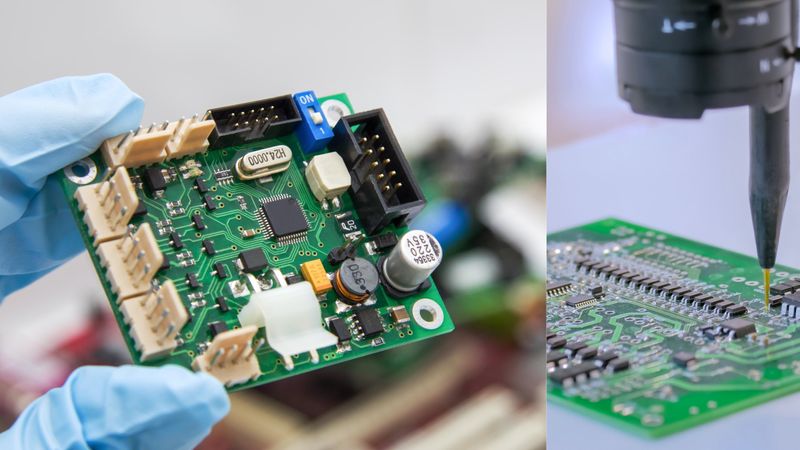
PCB Design and Manufacturing
Introduction
Printed Circuit Board (PCB) design is a crucial aspect of modern electronics, serving as the foundation for the development and manufacturing of electronic devices. PCBs are the backbone of electronic products, providing the necessary interconnections and support for various components. The PCB design process involves creating a layout that optimizes the placement of components, routing of traces, and ensuring the overall functionality and reliability of the circuit.
This series delves into the intricacies of PCB design, covering a wide range of topics essential for both beginners and experienced designers. Here’s the breakdown:
Part one establishes a strong foundation, exploring the design workflow – from schematic capture to layout and crucial design rule checks. We'll examine PCB components and layers, then examine signal integrity and thermal management – essential for crafting high-performance PCBs.
Part two will focus on translating PCB design into reality, exploring the intricacies of PCB manufacturing, assembly, testing, and debugging. Finally, we'll navigate the industry's leading PCB design software and tools, setting the path to creating high-performance electronic devices.
Now, let’s start with the fundamentals of PCB design!
Fundamentals of PCB Design
Printed Circuit Board (PCB) design involves the creation of a layout that defines the electrical connections and mechanical structure of an electronic device. Understanding the basic concepts and terminology related to PCB design is essential for creating reliable and efficient electronic products.
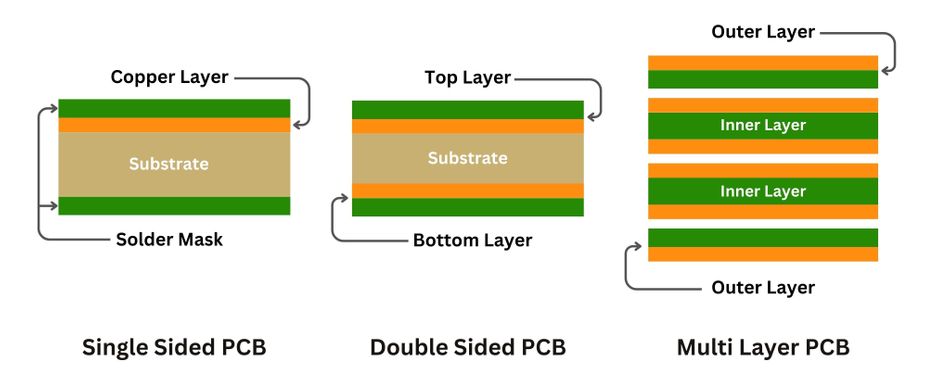
PCBs are classified into different types based on their construction and their number of conductive layers. Single-sided PCBs have components and traces on only one side of the board, while double-sided PCBs utilize both sides for component placement and routing. Multi-layer PCBs consist of three or more conductive layers, allowing for more complex designs and higher component density.
The choice of materials used in PCB fabrication plays a crucial role in the performance and reliability of the final product. The most common base material for PCBs is FR-4, a glass-reinforced epoxy laminate. [1] Other materials, such as polyimide or high-frequency laminates, may be used for specific applications that require enhanced thermal stability or improved electrical properties.
PCB Layers and Their Functions
A typical PCB consists of multiple layers, each serving a specific purpose in the overall design. The conductive layers, usually made of copper, are used for routing electrical signals and power between components. The number and arrangement of these layers depend on the complexity of the design and the required functionality.
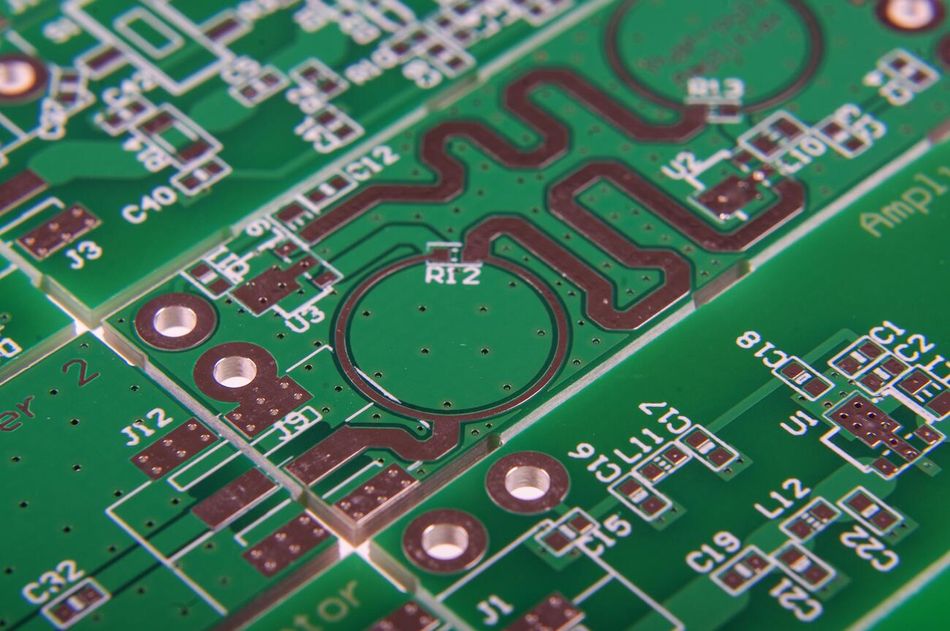
The layer stack up design is crucial for maintaining signal integrity and ensuring the proper functionality of PCB. A well-designed layer stackup considers factors such as signal return paths, impedance control, and crosstalk reduction. Common layer configurations include power and ground planes, signal layers, and dedicated layers for specific purposes like shielding or heat dissipation.
For example, a four-layer PCB may have a layer stackup consisting of a top signal layer, a ground plane, a power plane, and a bottom signal layer. This configuration establishes a stable foundation for signal transmission, reduces electromagnetic interference (EMI) disruptions, and facilitates effective power distribution. In more complex designs, additional layers may be added to accommodate higher component density, high-speed signals, or advanced features like embedded components or blind and buried vias.
PCB Components and Their Placement
PCB design involves the use of various types of components, each serving a specific function in the electronic circuit. These components can be broadly categorized into two main types: through-hole components and surface-mount components. Through-hole components have leads that are inserted into drilled holes on the PCB and soldered on the opposite side, while surface-mount components are placed and soldered directly onto the surface of the board.

Proper component placement is crucial for achieving optimal performance and reliability in a PCB design. When placing components, designers must consider factors such as signal integrity, power distribution, thermal management, and manufacturability. Components should be placed logically, minimizing the distance between related components to reduce signal propagation delays and improve overall circuit performance.
Thermal management is another critical aspect of component placement. Heat-generating components, such as power regulators or high-speed processors, should be placed in a way that allows for efficient heat dissipation. This may involve using thermal vias, heat sinks, or other cooling techniques to prevent overheating and ensure reliable operation of the circuit. The Joint Electron Device Engineering Council (JEDEC) publishes thermal management standards for various electronic components. [2] Following these standards ensures proper thermal performance and component longevity during placement.
Signal integrity is also a key consideration in component placement. Sensitive analog components, high-speed digital components, and power supply circuitry should be placed in a way that minimizes crosstalk, noise, and electromagnetic interference (EMI). Proper placement of decoupling capacitors close to power pins, the use of ground planes, and the separation of analog and digital sections of the board can help maintain signal integrity and prevent unwanted interactions between components.
Designers can produce PCB layouts that increase performance, reliability, and manufacturability by considering the principles of component placement. These layouts can also address specific application needs like signal integrity and thermal management.
Recommended Reading: Understanding Circuit Board Components: A Comprehensive Guide
PCB Design Workflow
The PCB design workflow is a systematic approach to creating a functional and reliable printed circuit board, from the initial concept to the final manufacturing stage. This workflow involves several key steps, each of which plays a crucial role in ensuring the success of the project.
The first step in the PCB design workflow is the conceptual design phase, where the overall requirements and specifications of the electronic product are defined. This phase involves close collaboration between the electrical engineering team, mechanical engineering team, and other stakeholders to establish the desired functionality, form factor, and performance characteristics of the PCB.

Once the conceptual design is finalized, the next step is schematic design, where the electrical connections and components are defined using a schematic capture tool. The schematic serves as a blueprint for the PCB layout and provides a clear representation of the electrical functionality of the circuit.
After the schematic is complete, the PCB layout process begins. This step involves placing components and routing traces on the board to create a physical representation of the circuit. The layout process must take into account various design rules, such as minimum trace widths, clearances, and via sizes, to ensure manufacturability and reliability.
Throughout the PCB design workflow, collaboration between different teams is essential. The electrical engineering team works closely with the mechanical engineering team to ensure that the PCB fits within the desired enclosure and meets any thermal or structural requirements. The manufacturing team provides input on design for manufacturability (DFM) guidelines to minimize production issues and improve yield.
Once the PCB layout is complete, the design undergoes a series of verification and validation steps, including design rule checks (DRC), electrical rule checks (ERC), and signal integrity simulations. These steps help identify and resolve any potential issues before the design is sent for manufacturing.
The final step in the PCB design workflow is the generation of manufacturing files, such as Gerber files and drill files, which are used by the PCB fabrication house to produce the physical boards. The manufactured PCBs then undergo testing and assembly before being integrated into the final electronic product.
By following a well-defined PCB design workflow and fostering collaboration between different teams, designers can create high-quality, reliable, and manufacturable PCBs that meet the specific requirements of the application.
Schematic Design
Schematic design is a critical step in the PCB design workflow, as it lays the foundation for the entire project. The purpose of schematic design is to create a graphical representation of the electrical connections and components in the circuit, using standardized symbols and notations.
A well-designed schematic should be clear, accurate, and easy to understand, even for someone unfamiliar with the specific project. Best practices for creating effective schematics include using consistent naming conventions for components and nets, organizing the schematic into logical hierarchies or functional blocks, and providing clear and concise annotations and comments.
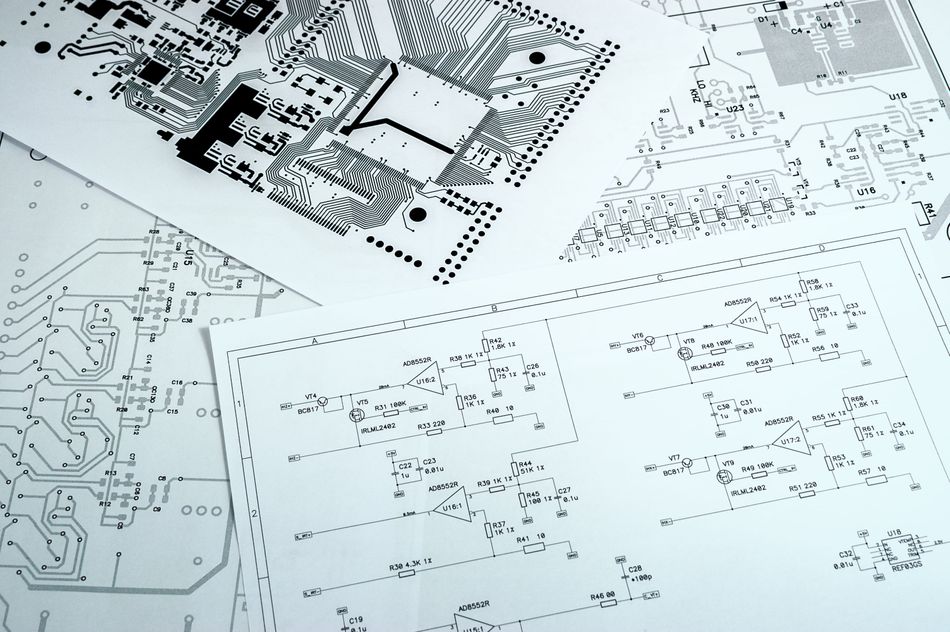
When creating a schematic, designers use a variety of standard symbols to represent different types of components. For example, resistors are typically represented by a zigzag line, while capacitors are shown as two parallel lines. Transistors, diodes, and integrated circuits have their own unique symbols that indicate their specific function and pin configuration.
In addition to component symbols, schematics also use various types of connectors and labels to indicate how different parts of the circuit are interconnected. Power and ground symbols, for instance, are used to show the connection to the power supply and ground planes, while port symbols are used to represent external connections to the PCB.
By following the best practices and consistent symbols and notations, designers can create schematics that effectively communicate the electrical functionality of the circuit and serve as a reliable foundation for the subsequent stages of the PCB design workflow.
PCB Layout
PCB layout is the process of arranging components and routing traces on a printed circuit board to create a functional and manufacturable design. This step is critical for ensuring the proper operation of the electronic product and minimizing potential issues during manufacturing and assembly.
The principles of PCB layout design involve several key considerations, including component placement, trace routing, and via placement. Components should be placed in a logical and organized manner, with consideration given to factors such as signal integrity, thermal management, and manufacturability.
Proper trace routing is essential for maintaining signal integrity and ensuring reliable operation of the circuit. Traces should be routed in a way that minimizes crosstalk, noise, and electromagnetic interference (EMI). High-speed and analog circuits require special attention, as they are particularly sensitive to signal degradation and interference.
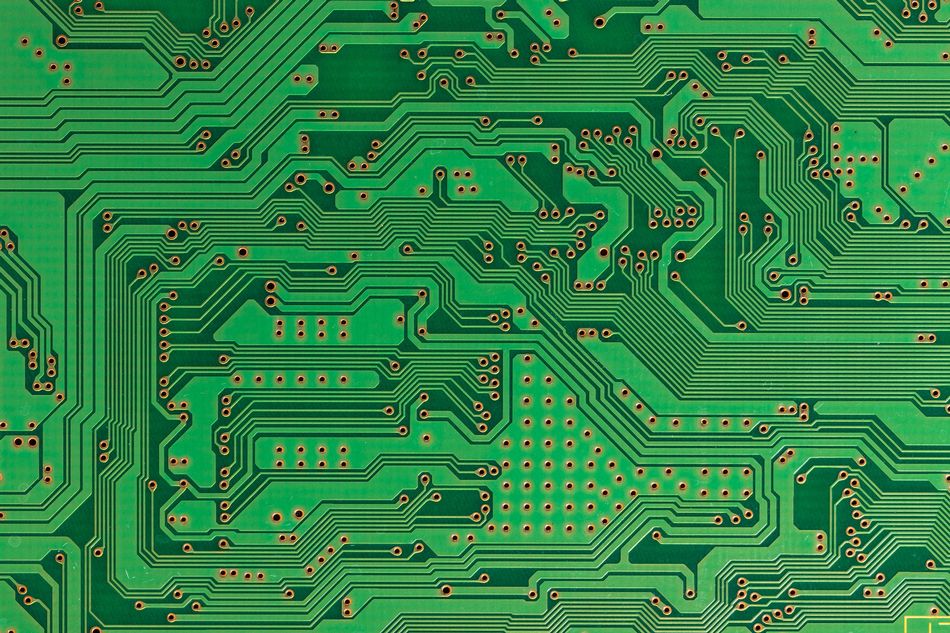
Via placement is another important aspect of PCB layout design. Vias are small holes drilled through the PCB that provide electrical connections between different layers. Proper via placement can help minimize signal degradation and improve overall circuit performance.
In addition to these general principles, designers must also consider the specific requirements of the application. For example, high-speed digital circuits may require the use of controlled impedance traces and specialized routing techniques to maintain signal integrity. Analog circuits, on the other hand, may require careful consideration of grounding and shielding to minimize noise and interference.
By following best practices and considering the unique requirements of the application, designers can create PCB layouts that optimize performance, reliability, and manufacturability, while also addressing the specific needs of the electronic product.
Design Rule Checking (DRC) and Design for Manufacturing (DFM)
DRC and DFM are two critical aspects of the PCB design workflow that help ensure the integrity and manufacturability of the printed circuit board.
Design Rule Checking (DRC) is a process that verifies the PCB layout against a set of predefined design rules, such as minimum trace widths, clearances, and via sizes. [3] These rules are established by the PCB fabrication house to ensure that the design can be manufactured without issues. DRC checks help identify potential manufacturing problems, such as shorts, opens, and clearance violations, before the design is sent for fabrication.
Design for Manufacturing (DFM) is a set of guidelines and best practices that help optimize the PCB layout for efficient and cost-effective manufacturing. DFM considerations include component placement, trace routing, via placement, and the use of specialized features like blind and buried vias. By following DFM guidelines, designers can minimize manufacturing issues, improve yield, and reduce costs associated with rework and scrap.
Common DRC and DFM rules include:
Minimum trace widths: Traces must be wide enough to carry the required current without overheating or causing voltage drops.
Minimum clearances: Traces and components must be spaced far enough apart to prevent shorts and ensure proper solderability.
Via sizes: Vias must be large enough to accommodate the required current and provide a reliable electrical connection between layers.
Solder mask clearances: Solder mask must be clear of component pads and traces to ensure proper solderability.
Annular ring sizes: The annular ring, or the copper surrounding a via hole, must be large enough to provide a reliable electrical connection and withstand the manufacturing process.
Component placement: Components should be placed in a way that allows for efficient assembly and minimizes the risk of manufacturing defects.
Trace routing: Traces should be routed in a way that minimizes crosstalk, noise, and electromagnetic interference (EMI).
By following DRC and DFM guidelines, designers can create PCB layouts that are both functional and manufacturable, reducing the risk of manufacturing issues and ensuring a high-quality end product.
Recommended Reading: How to Design a PCB Layout: A Comprehensive Guide
Signal Integrity and EMC Considerations
Signal integrity and electromagnetic compatibility (EMC) are two critical aspects of PCB design that directly impact the performance and reliability of electronic products. Signal integrity refers to the ability of a signal to propagate through a PCB without distortion or degradation, while EMC deals with the ability of an electronic device to operate without causing or being affected by electromagnetic interference (EMI). [4]
Poor signal integrity and EMC can lead to a variety of problems, including signal distortion, crosstalk, noise, and EMI. These issues can cause malfunctions, reduced performance, and even complete failure of the electronic device. In some cases, poor EMC can also lead to regulatory compliance issues, as electronic products must meet specific EMC standards to be sold in certain markets.
Several key factors can affect signal integrity and EMC in PCB design, including:
Trace routing: Proper trace routing is essential for maintaining signal integrity and minimizing crosstalk and EMI. High-speed signals should be routed away from sensitive analog circuits, and proper spacing and shielding should be used to minimize interference.
Grounding and power distribution: A well-designed grounding and power distribution system is critical for maintaining signal integrity and minimizing EMI. Proper use of ground planes, power planes, and decoupling capacitors can help reduce noise and ensure stable power delivery to components.
Component placement: Proper component placement can help minimize signal propagation delays, reduce crosstalk, and improve overall signal integrity. Components should be placed close to their associated circuits, and sensitive analog components should be separated from noisy digital components.
Impedance matching and termination: Proper impedance matching and termination are essential for maintaining signal integrity, particularly in high-speed digital circuits. Mismatched impedances can cause signal reflections, leading to distortion and degradation of the signal.
By carefully considering these factors and following best practices for signal integrity and EMC, designers can create PCBs that perform reliably and meet the required regulatory standards.
Impedance Matching and Termination
Impedance matching and termination are critical techniques used in PCB design to maintain signal integrity and minimize signal reflections. When a signal encounters a change in impedance, such as when it transitions from a trace to a component or from one PCB layer to another, a portion of the signal energy is reflected back toward the source. These reflections can cause signal distortion, ringing, and other issues that degrade the quality of the signal.
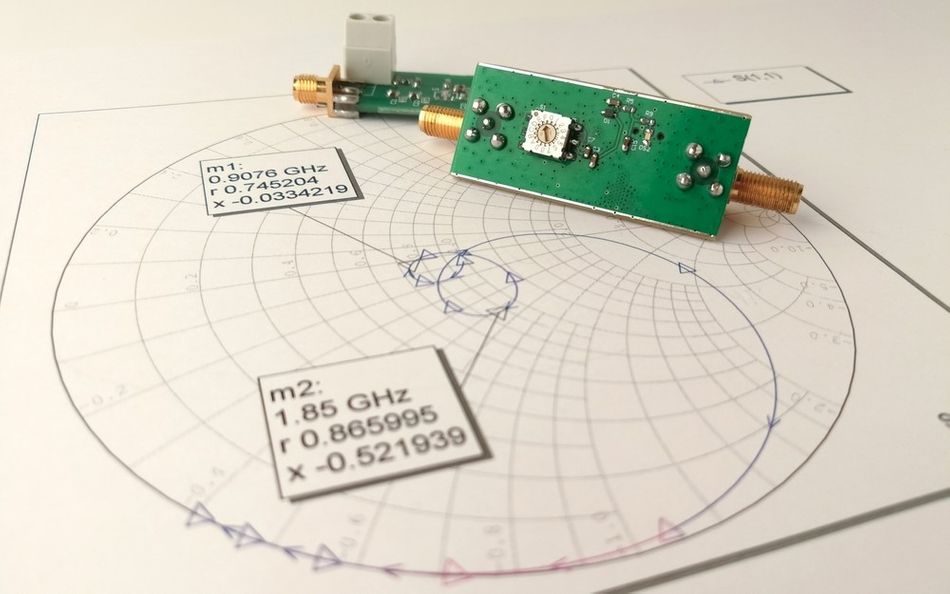
To minimize these issues, designers must ensure that the impedance of the signal path is matched to the impedance of the source and load. This is typically achieved through the use of controlled impedance traces, which are designed to have a specific characteristic impedance based on factors such as trace width, thickness, and spacing.
In addition to impedance matching, designers must also use proper termination techniques to minimize signal reflections. Termination involves placing a resistive load at the end of a signal path to absorb any reflected energy and prevent it from propagating back toward the source.
Common termination techniques include:
Series termination: A resistor is placed in series with the signal source to match the impedance of the trace and minimize reflections.
Parallel termination: A resistor is placed in parallel with the load to match the impedance of the trace and absorb any reflected energy.
AC termination: A resistor and capacitor are placed in series with the load to provide a high-frequency termination while allowing DC bias to pass through.
Differential termination: Resistors are placed between the positive and negative signals of a differential pair to match the impedance and minimize reflections.
Proper impedance matching and termination are particularly important in high-speed digital circuits, where signal integrity is critical for reliable operation. By using controlled impedance traces and appropriate termination techniques, designers can minimize signal reflections, reduce distortion, and ensure that signals arrive at their destination with minimal degradation.
Crosstalk and Noise Reduction Techniques
Crosstalk is a phenomenon that occurs when a signal from one trace or component unintentionally couples with another, causing interference and degrading signal quality. This can lead to signal distortion, false triggering, and other issues that can compromise the performance and reliability of the electronic device.
Crosstalk can occur through several mechanisms, including capacitive coupling, inductive coupling, and electromagnetic radiation. Capacitive coupling occurs when the electric field of one signal couples with another through the dielectric material between the traces. Inductive coupling occurs when the magnetic field of one signal induces a current in another trace. Electromagnetic radiation can cause crosstalk when high-frequency signals radiate energy that is picked up by nearby traces or components.
To reduce crosstalk and noise in PCB design, designers can employ several techniques, including:
Proper trace spacing: Increasing the spacing between traces can help reduce capacitive and inductive coupling. This is particularly important for high-speed signals or signals with large voltage swings.
Shielding: Using grounded copper planes or traces between sensitive signals can help shield them from electromagnetic interference and reduce crosstalk. This technique is commonly used in mixed-signal designs, where analog and digital signals are routed on the same board.
Differential signaling: Using differential signaling, where a signal is transmitted as a pair of complementary signals, can help reduce crosstalk and noise. Differential signals are less susceptible to external noise and interference than single-ended signals.
Filtering: Using filters, such as low-pass, high-pass, or band-pass filters, can help remove unwanted noise and interference from signals. This is particularly useful for removing high-frequency noise from power supplies or other sources.
Proper grounding: Using a solid ground plane and properly connecting components to ground can help reduce noise and improve signal quality. Proper grounding can also help reduce electromagnetic radiation and susceptibility to external interference.
Effective noise reduction strategies often involve a combination of these techniques, tailored to the specific requirements of the application. For example, in a mixed-signal design, designers may use a combination of shielding, differential signaling, and filtering to reduce crosstalk between analog and digital signals. In a high-speed digital design, designers may focus on proper trace spacing and termination to minimize reflections and maintain signal integrity.
By understanding the sources of crosstalk and noise in PCB design and employing appropriate reduction techniques, designers can create PCBs that perform reliably and meet the required specifications for signal quality and electromagnetic compatibility.
Thermal Management in PCB Design
Thermal management is a critical aspect of PCB design that ensures the reliable operation and longevity of electronic components. Proper thermal management involves the efficient dissipation of heat generated by components, preventing overheating and potential damage to the PCB and its components.
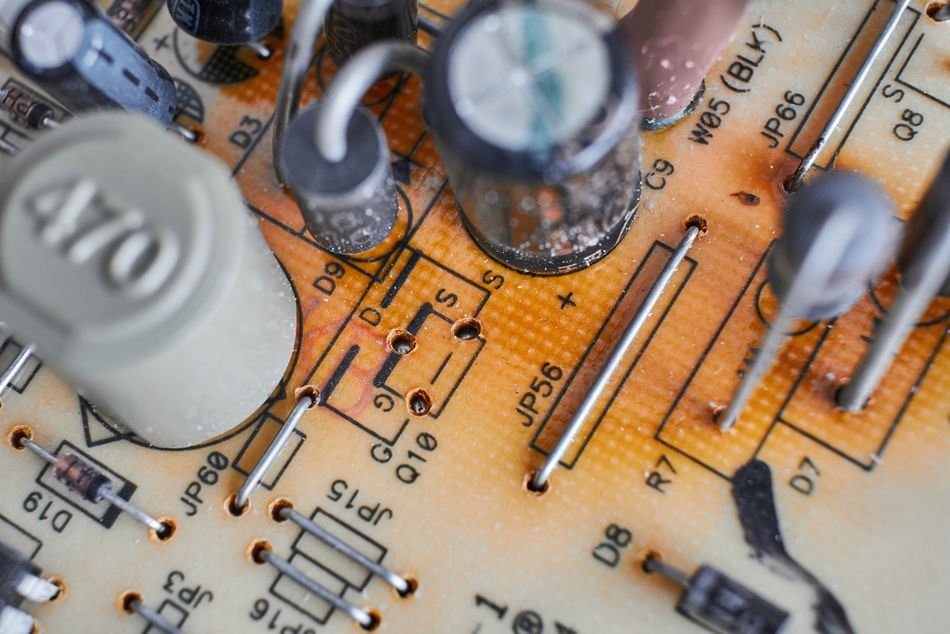
Several factors contribute to heat generation on a PCB, including:
Power dissipation: Components that consume significant amounts of power, such as processors, power regulators, and amplifiers, generate heat as a byproduct of their operation. The amount of heat generated is directly proportional to the power consumed by the component.
Component density: High component density on a PCB can lead to increased heat generation, as components are placed closer together and have less space for heat dissipation. This is particularly important in modern PCB designs, where miniaturization and increased functionality are driving higher component densities.
Environmental factors: The operating environment of the PCB can also contribute to heat generation. High ambient temperatures, poor ventilation, and exposure to direct sunlight can all increase the heat load on the PCB and its components.
To effectively manage heat in PCB design, designers can employ various thermal management techniques, including:
Proper component placement: Placing high-power components away from heat-sensitive components and providing adequate spacing between components can help improve heat dissipation and prevent thermal interaction between components.
Thermal vias and heat sinks: Using thermal vias and heat sinks to provide a low-resistance thermal path from components to the PCB's exterior can help efficiently dissipate heat and prevent overheating.
Copper pours: Using large copper pours on the PCB, particularly on the power and ground planes, can help spread heat more evenly across the board and improve overall thermal performance.
Airflow and ventilation: Incorporating airflow and ventilation into the PCB design, such as using fans or designing the enclosure to promote natural convection, can help remove heat from the PCB and its components.
Materials selection: Choosing PCB materials with high thermal conductivity, such as aluminum or ceramic substrates, can help improve heat dissipation and reduce thermal resistance.
By carefully considering these thermal management techniques and applying them appropriately to the specific requirements of the application, designers can create PCBs that operate reliably and maintain optimal performance even under demanding thermal conditions.
Thermal Vias and Heat Sinks
Thermal vias and heat sinks are two commonly used techniques for dissipating heat from a PCB and its components. Thermal vias are small, plated holes that are strategically placed in the PCB to provide a low-resistance thermal path from the component to the PCB's exterior. By conducting heat away from the component and into the surrounding PCB material, thermal vias help to spread the heat more evenly across the board and prevent localized hot spots.
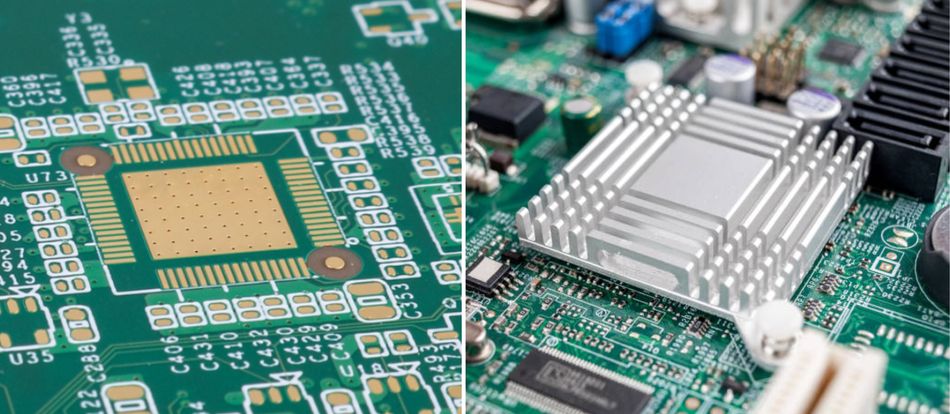
When designing thermal vias, it is important to consider factors such as via size, spacing, and placement. Larger vias and more closely spaced vias can provide better thermal conductivity, but may also impact signal integrity and routing density. Placing thermal vias directly under high-power components, such as processors or power regulators, can help provide a direct thermal path to the PCB's exterior.
Heat sinks are another effective tool for thermal management in PCB design. Heat sinks are metal structures that are attached to high-power components to provide a large surface area for heat dissipation. By conducting heat away from the component and into the surrounding air, heat sinks help to reduce the component's operating temperature and prevent overheating.
When selecting and placing heat sinks, designers must consider factors such as the heat sink's material, size, and shape, as well as the airflow and ventilation available in the PCB's operating environment. Copper and aluminum are common heat sink materials, chosen for their high thermal conductivity and relatively low cost. [5] The size and shape of the heat sink should be optimized for the specific component and its power dissipation requirements, as well as the available space on the PCB.
Proper thermal via and heat sink placement is critical for effective thermal management. Thermal vias should be placed as close to the heat source as possible, while heat sinks should be positioned to maximize their exposure to airflow and minimize obstruction from other components. In some cases, designers may also use thermal interface materials, such as thermal pads or thermal paste, to improve the thermal conductivity between the component and the heat sink.
By using thermal vias and heat sinks appropriately and in combination with other thermal management techniques, designers can effectively dissipate heat from high-power components and ensure reliable operation of the PCB over its intended lifespan.
Continue Reading: PCB Design: A Comprehensive Guide to Printed Circuit Board Design - Part 2
Conclusion
In conclusion, creating a functional and reliable PCB requires a comprehensive understanding of design principles and best practices. This includes careful consideration of factors like component selection, placement, and routing, as well as adherence to manufacturability guidelines. By following a structured workflow that incorporates schematic design, PCB layout, and rigorous verification steps, designers can ensure the integrity and performance of their PCBs. Signal integrity, electromagnetic compatibility, and thermal management are crucial aspects to consider while designing PCB. This knowledge empowers engineers to develop innovative and functional electronic devices that play an integral role in modern technology.
Frequently Asked Questions (FAQs)
Q. What is the difference between a single-sided and double-sided PCB?
A. A single-sided PCB has components and traces on only one side of the board, while a double-sided PCB utilizes both sides for component placement and routing.
Q. How do I choose the right PCB material for my design?
A. The choice of PCB material depends on factors such as the operating environment, frequency, and power requirements of the application. FR-4 is a common material for general-purpose PCBs, while high-frequency laminates or metal-core substrates may be used for more specialized applications.
Q. What are the most common PCB component packages?
A. Common PCB component packages include through-hole (e.g., DIP, TO), surface-mount (e.g., QFP, BGA, QFN), and chip-scale packages (CSP). The choice of package depends on factors such as size, pin count, and thermal requirements.
Q. How can I minimize crosstalk in my PCB design?
A. Crosstalk can be minimized by proper trace routing (e.g., avoiding parallel runs, using guard traces), ground plane placement, and the use of differential signaling. Simulation tools can also be used to identify and mitigate crosstalk issues.
Q. What are the benefits of using a multi-layer PCB?
A. Multi-layer PCBs offer several benefits, including increased routing density, better signal integrity, and improved EMI/EMC performance. They also allow for the use of dedicated power and ground planes, which can improve power distribution and reduce noise.
Q. How do I ensure proper impedance matching in my PCB design?
A. Proper impedance matching can be achieved by controlling the geometry of the traces (e.g., width, spacing) and the properties of the dielectric material. Specialized tools and calculators are available to help designers determine the optimal trace geometry for a given impedance.
Q. How can I effectively manage heat dissipation in my PCB design?
A. Heat dissipation can be managed through proper component placement, the use of thermal vias and planes, and the selection of appropriate PCB materials. Thermal simulation tools can also be used to identify hot spots and optimize the thermal design.
References
[1] Wevolver. FR4: Understanding the Material and Its Applications in PCB Design [Cited 2024 April 1] Available at: Link
[2] Herculus. JEDEC-Joint Electron Device Engineering Council [Cited 2024 April 1] Available at: Link
[3] Altium. Design Rule Checking in the PCB Design Workflow [Cited 2024 April 1] Available at: Link
[4] Cadence. How to Optimize PCB Design for EMC Compliance [Cited 2024 April 1] Available at: Link
[5] HEATELL. Choosing the Right Heat Sink for Your Application! [Cited 2024 April 1] Available at: Link
Table of Contents
IntroductionFundamentals of PCB DesignPCB Layers and Their FunctionsPCB Components and Their PlacementPCB Design WorkflowSchematic DesignPCB LayoutDesign Rule Checking (DRC) and Design for Manufacturing (DFM)Signal Integrity and EMC ConsiderationsImpedance Matching and TerminationCrosstalk and Noise Reduction TechniquesThermal Management in PCB DesignThermal Vias and Heat SinksConclusionFrequently Asked Questions (FAQs)References